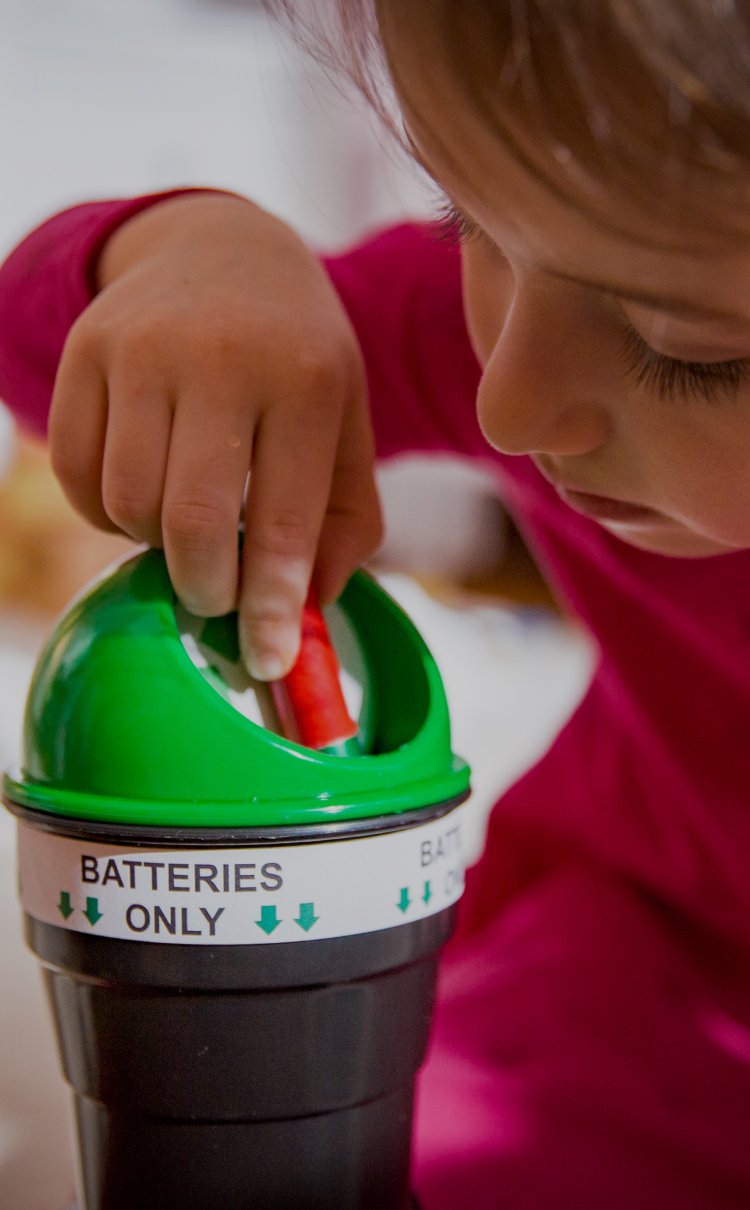Batteries must be handled with care as they contain hazardous chemicals. One particular area of concern is the disposal of batteries, as the battery’s harmful chemicals can leak from discarded batteries. To minimise the harm to yourself and the environment, follow our guide on how to properly dispose of your batteries.
How to Properly Dispose of Batteries
Battery Recycling
Avoid throwing away used batteries alongside your regular household waste. When batteries end up at landfill sites, the chemicals and hazardous materials from the battery contaminate the landfill site, contributing to air, water, and soil pollution.
Batteries contain valuable, raw materials that can be recycled and reused to create new products. The best way to discard batteries is to find a local battery recycling service. Both single-use and rechargeable batteries can be taken to recycling centres to be recycled into new products. Check your local council and recycling centres to find where to recycle your used batteries; some supermarkets and DIY centres also offer battery recycling capabilities.
Leaking Batteries
When disposing of a leaking battery, make sure to place the affected battery into a non-metal container (to avoid further damage) and avoid contact with your skin. If contact does occur, wash your hands and skin thoroughly as soon as possible. Once the battery is contained and unable to contaminate other items, proceed to recycle the battery at your local recycling centre.
Safety First
Used batteries are not always completely discharged, so take caution when disposing of multiple used batteries that could come into contact with one another. To dispose of the batteries safely, cover the positive terminal of the battery with protective caps or masking tape when grouping used batteries for disposal. This will ensure the battery type is still identifiable at the recycling centre, while also protecting you from danger; do not wrap the entire battery so that it is unrecognisable.
Why Battery Recycling is Important
To protect the environment and live sustainably, it’s advised to follow the principle of “Reduce, Reuse, Recycle.” This means doing what you can to reduce the amount of waste you produce, reuse items whenever you can, and recycle items that you cannot reuse. In following these ‘Three R’s,’ we can all do our part to minimise waste and environmental damage. When it comes to disposing of batteries, due to hazardous materials, proper recycling is necessary to prevent hazardous waste and harm to the environment.
At GP, we’re committed to developing more sustainable sources of power by working towards zero waste in our battery manufacturing facilities. We’re also constantly looking for new ways to increase the use of recycled materials in our battery products, with many of our rechargeable battery products comprising at least 10% recycled materials.
Alternatives to Single-Use Batteries
Unfortunately, there is no perfect, 100% environmentally friendly power solution. However, by reducing, reusing, and recycling, you can significantly lower your carbon footprint as much as possible. This includes swapping single-use batteries for rechargeable batteries where possible. More people using rechargeables instead of single-use batteries minimises the number of batteries entering our landfills, as a single rechargeable battery can replace hundreds of single-use batteries. From the eco-friendliness to the significant cost savings of using rechargeable batteries, there’s never been a better time to switch to rechargeables.






